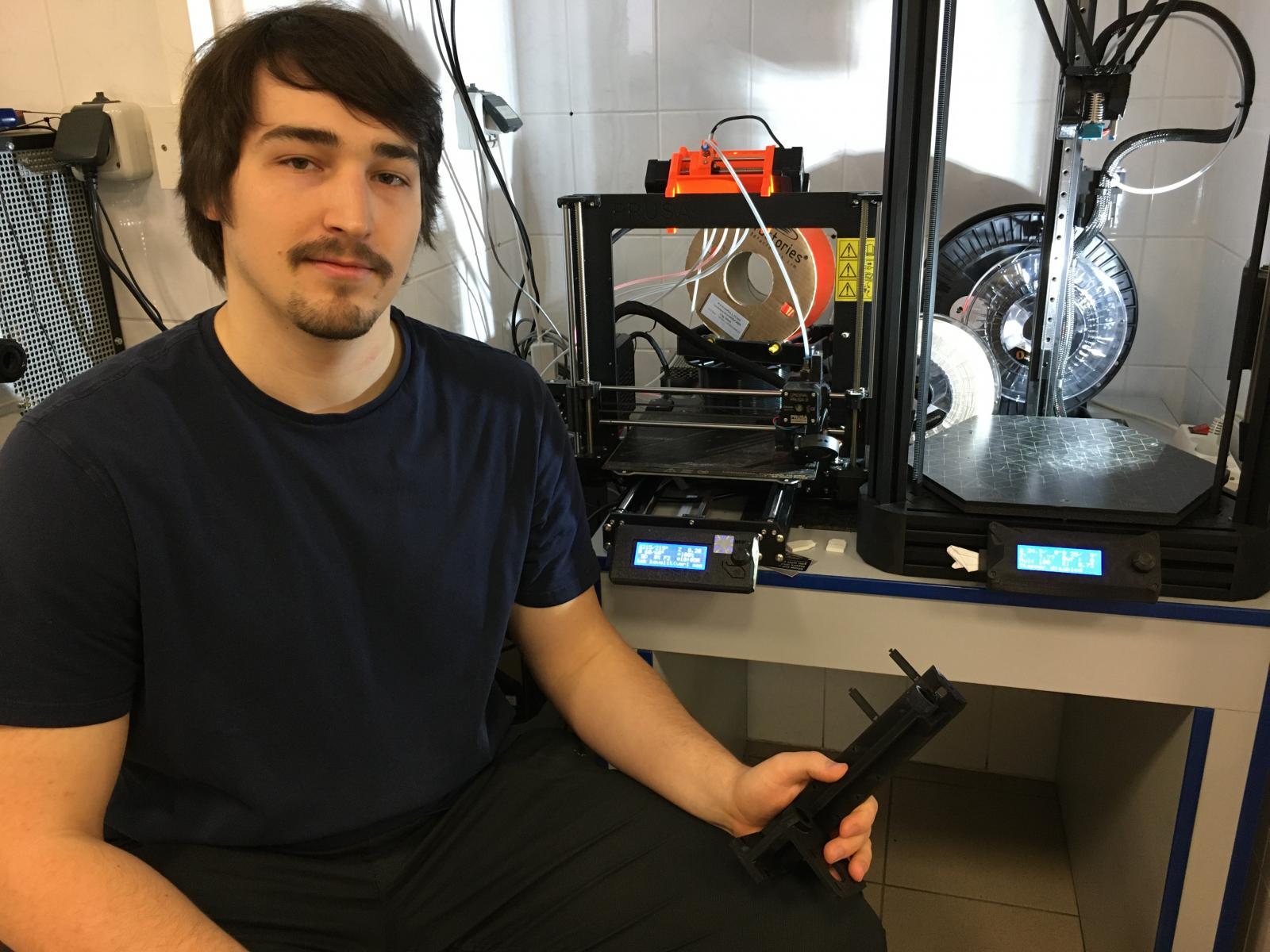3. May 2020
Jan Zítka, a doctoral student from CEITEC Brno University of Technology, wants to simplify and make basic blood diagnostics easier with his Point-of-Care device. The student would like to offer approximately five kilogram devices, which can analyze the patient's blood and draw attention to possible diseases in about twenty minutes, for example to general practitioners. Under the leadership of Professor Vojtěch Adam he has already created a functional prototype of a bioanalyzer, which is now awaiting testing and possible modifications. At the beginning of this year, Jan Zítka also received the Brno Ph.D. Talent award.

You don't feel well, but you don't want to run to the doctors right away. You take a drop of blood, insert it together with the so-called cartridge into Jan Zítka's device. And in twenty minutes you will receive either a confirmation that everything is fine or a warning that you should go to the doctor after all. This is in short, how the practical use of a bioanalyzer, which Jan Zítka is working on, might one day look like.
Although the device is close to completion and its prospects are very promising if Jan Zítka did not stand up for his idea, the device might not have been created at all. "I had a little faith in the project at the beginning. Which can be translated as not believing it at all, "laughs his supervisor Vojtěch Adam. He thought that Zítka was just wasting time. "When Honza first came up with it, it looked like a big ball of wires. I expressed my concern that this could never end in anything good. I told Honza that he was losing his precious time and that I saw no practical application for the device, "admits Adam, adding that the very conversation about the almost completed device is proof that he was wrong on all three points.
The Point-of-Care bioanalyzer, in the size of two shoe boxes, automates a number of laboratory tasks. "It automates processes that are normally done by hand. For example, the device has an automated pipette, so it repeatedly and accurately dispenses samples by itself. It is also equipped with a mechanism for movement in three axes, by means of which it moves liquids in the device, ”describes Zítka. "I liked 3D printing and rapid prototyping. In the past, I made several prototypes, which colleagues still use to facilitate the manual work in laboratories. In the bioanalyzer, I then combined various elements from previous prototypes, "explains the doctoral student.
Analyzer will go to doctors´ offices
Ideally, the device should help people quickly determine if a disease is developing in their body. "Currently, the device is aimed at diagnosing sepsis, cardiovascular disease or selected markers of cancer. However, the main idea is that the device will remain the same, only the so-called cartridges will change, and will test different markers, "outlines the use of the device its author. "The patient will then receive information in a few tens of minutes that everything is OK, or it will turn out that some value is not right and they should go for more detailed testing," adds Zítka.
However, Vojtěch Adam points out that although placing the device in the hands of patients is, of course, a dream goal, a more realistic scenario is to provide it to general practitioners. "It should be noted that we did not invent a new device and did not develop an unknown technology. Both are known and are commonly used in hospitals. But Honza's effort was to miniaturize the device while maintaining accuracy. This makes the bioanalyzer more accessible. Although, in the finale it is an effort to give more opportunities to the patients themselves, I think we still have an important step ahead. And that is general practitioners' offices, "says Adam.
The doctor would test the blood directly during the examination. "Waiting for the results and calling the office would be no longer necessary. Basic blood analysis would be simple, accurate and affordable. Although I believe that Honza will once make it to the patients with his device, there are still many questions. So far, not many tests made it to home use. I can think of a pregnancy test or a glucose test for diabetics. Therefore, in addition to the technical questions, we will have to solve mainly legislative issues, "Adam warns, noting that the main privilege lies in the accessibility of the technology. "The devices used in hospitals weigh about 100 kilograms. Our bioanalyzer is about five kilograms, "he notes.
Authors agree it is not a copy of Theranos
They both laugh to the question of the resemblance to the infamous Theranos device from Elizabeth Holmes. This is not the first time they have to answer whether they are trying to do the same thing in which Holmes completely failed. "We have to emphasize here that our main focus is on the device itself. Honza's know-how lies in the ability to miniaturize existing facilities and maintain the same capabilities. But we do not develop the tests themselves. Unlike Theranos, we use standard ones and do not change them in any way, “ points out Vojtěch Adam.
Author: Zuzana Pospíšilová


 Share
Share